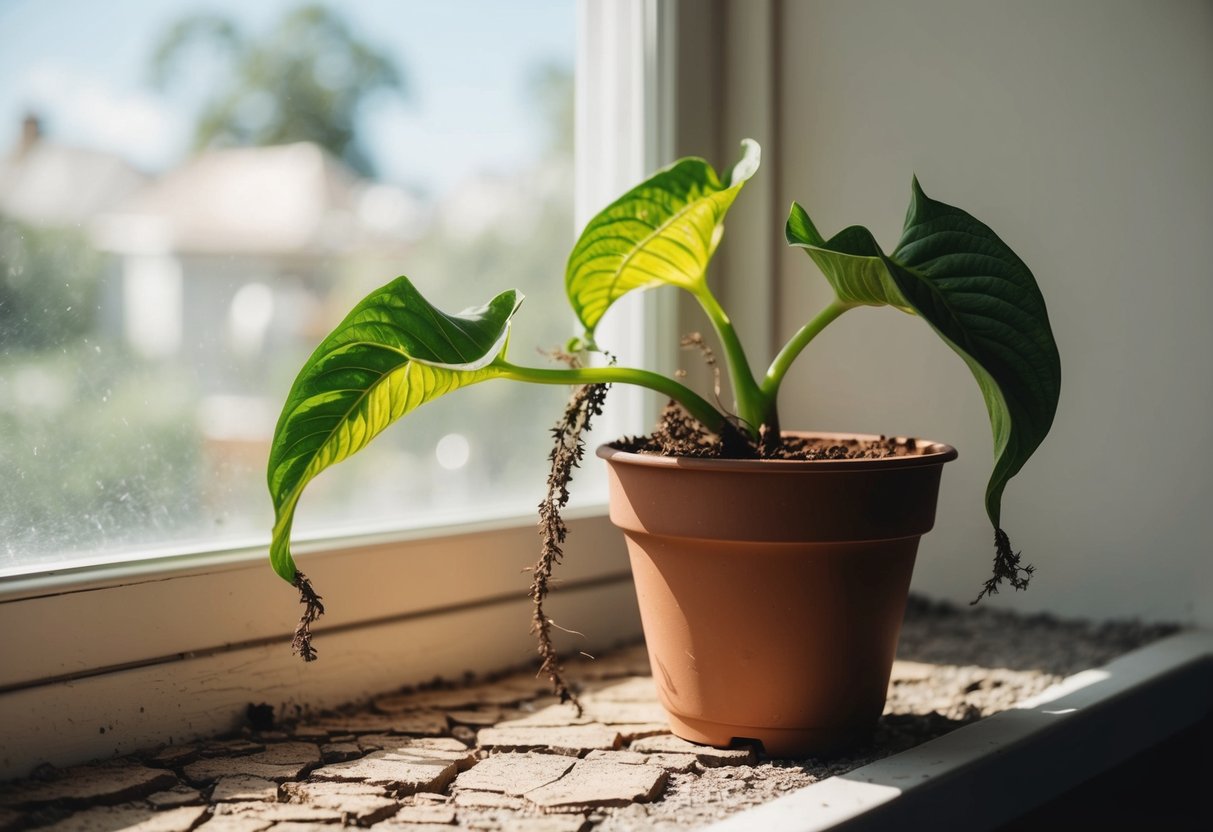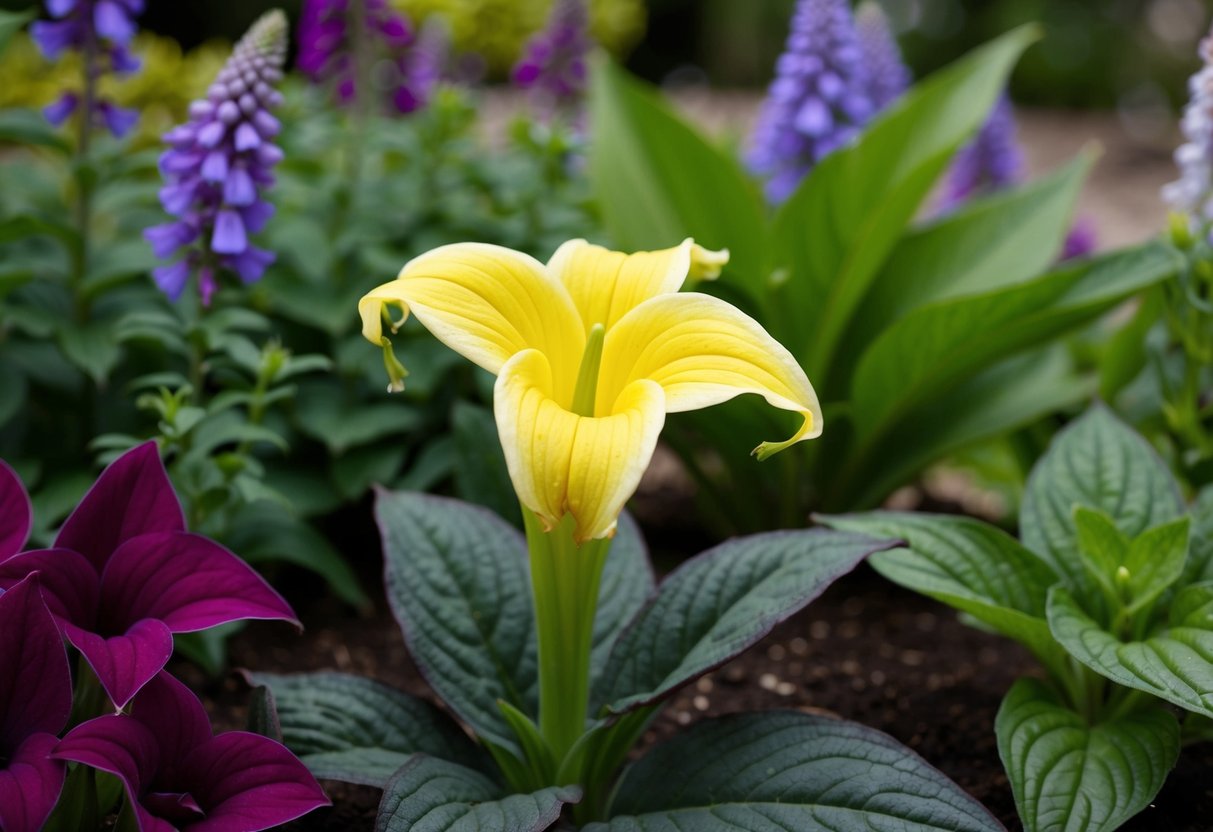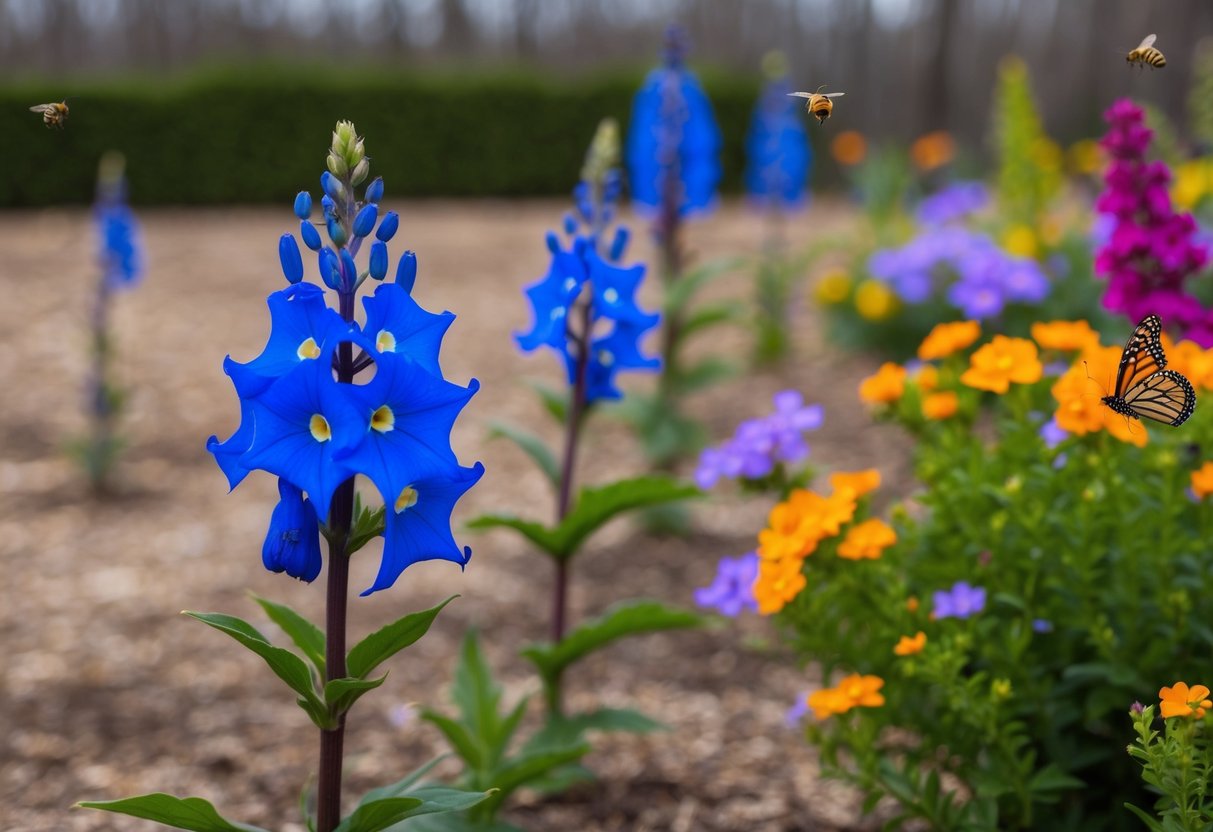Why Does My Lobelia Keep Dying? Tips for Thriving Blooms
Struggling with seeing your once-vibrant lobelia struggle to survive? You’re not alone, and there’s usually a reason behind it. Improper watering is one of the most common culprits. These delicate plants can be harmed by either too much or too little water. Understanding the balance necessary can save you time and heartache.

Lobelia plants can also suffer from too much direct sunlight or heat. If you’re noticing your lobelia turning brown, it might be time for a little shade or a cooler spot in your garden. Keep an eye out for pests or fungal issues, such as rust, which can affect their health.
Make sure your lobelia’s environment is suitable for its growth. This means ensuring it has well-draining soil and isn’t competing with more dominant plants for nutrients and sunlight. By addressing these common problems, you can bring your lobelia back to life and keep it thriving.
The Basics of Lobelia Care

Taking care of lobelia involves understanding the specific needs of these beautiful plants. From choosing the right type to ensuring proper light, water, and soil conditions, you can help your lobelia thrive.
Understanding Lobelia Types
Lobelia comes in both annual and perennial varieties. Annual lobelia is popular for its vibrant summer blooms and is often planted for seasonal color. Lobelia erinus is a common choice for annual use. Perennials, like the Lobelia cardinalis, return year after year if you live in suitable hardiness zones. Understanding which type you have helps tailor care to promote healthy growth and blooming.
Sunlight and Temperature Requirements
Lobelia prefers specific light and temperature conditions. Most varieties enjoy full sun to partial shade. Ensure they receive at least 4-6 hours of sunlight to bloom well. In hotter climates, a bit of afternoon shade can protect them from excessive heat. Lobelia thrives in moderate temperatures but can struggle if it gets too hot or cold. Keeping the environment consistent helps maintain their vibrant colors and lush foliage. If you live in a very hot area, focus on protecting your plants from the harsh midday sun, especially during peak summer heat.
Watering and Drainage Essentials
Proper watering is crucial for lobelia. They like consistently moist soil, but overwatering can lead to root rot. It’s important to water deeply to soak the roots while ensuring the soil drains well. Well-draining soil prevents water from standing around the roots. Check the soil regularly; if it’s dry an inch down, it’s time to water again. In very dry or hot environments, increasing humidity can benefit your plants. You can mist the leaves lightly or place a tray with pebbles and water under the pot to help maintain humidity. Avoid letting the plant sit in water, as this can lead to issues with pests and diseases.
Planting and Potting

When planting Lobelia, understanding the right soil and potting methods can make all the difference in the plant’s health. Proper soil choice and container selection are crucial for successful growth.
Choosing the Right Soil
Lobelia thrives in well-drained soil as it prevents root rot. This is key if you’re using containers like hanging baskets or window boxes. To achieve this, consider a soil mix that includes ingredients like peat moss or sand. These materials help to maintain moisture balance without waterlogging.
Test the soil’s pH level if possible, and aim for a neutral to slightly acidic range. This adjustment ensures better nutrient absorption. A compost-enriched soil also adds beneficial nutrients, ensuring healthier and more vibrant plants.
Potting Mix and Containers
Selecting a good potting mix is vital. A mix of coco coir and perlite creates an ideal environment for Lobelia. Perlite helps aerate the soil, while coco coir retains the needed moisture. This blend creates the perfect balance to support your plants’ growth.
Choose the right containers. Ensure your containers have drainage holes to prevent excess water retention. Hanging baskets and window boxes are popular choices for decorative display and are suitable when they facilitate proper drainage. Regularly check the moisture level by feeling the topsoil, adding water only when dry to the touch.
By following these guidelines, you increase the chances of thriving Lobelia plants. If you need specific tips on maintaining moisture, this guide on Lobelia care in pots is helpful.
Common Challenges in Growing Lobelia

Growing lobelia can be delightful, but you’ll face some challenges. The key hurdles often relate to pests, diseases, and watering.
Dealing with Pests and Diseases
Lobelia is beautiful but can attract several pests. Aphids and mites are common culprits, feeding on your plant and weakening it. Rust fungus is another problem. This disease shows up as orange or brown spots on the leaves. If you see this, it’s important to treat your plant quickly with appropriate treatments like neem oil sprays.
Fungal problems also haunt lobelia, especially in wet conditions. To keep your plant healthy, regularly check for signs of disease. Pick off affected leaves immediately. Using a balanced fertilizer can help strengthen the plant, making it less vulnerable to pests and diseases.
Managing Watering Issues
Watering can be tricky with lobelia since both overwatering and underwatering cause problems. Too much water might result in root rot, making your plant droopy and soft. On the other hand, too little water will dry out the leaves and brown plant tissue could appear.
Check the soil before watering; it should feel moist, not soggy. In dry spells, you might water more often, but if the soil stays wet for too long, reduce watering to avoid issues. Regularly assess your plant’s needs, adjusting your care routine as necessary. This helps ensure your lobelia thrives.
Nurturing and Maintenance

To keep your lobelia thriving, focus on effective fertilizing and thoughtful pruning. These practices encourage robust growth and abundant blooms for both annual and perennial lobelia species.
Fertilizing for Robust Growth
Fertilizing your lobelia is crucial for healthy growth. Both annual and perennial lobelia benefit from a balanced feeding routine. Start by using a liquid fertilizer every two weeks during the growing season. This helps nourish the plant and supports vibrant blooms.
Alternatively, a granular fertilizer could be applied every month. This slow-release option provides nutrients steadily. Make sure to follow the instructions on the packaging for best results. Also, a layer of mulch around your lobelia can help retain moisture and release nutrients into the soil.
Pruning and Deadheading for More Blooms
Pruning and deadheading are key to encouraging more flowers on your lobelia. Regularly deadhead lobelia by removing spent blooms. This not only keeps the plant tidy but also stimulates further blooming.
Use sharp scissors for precise cuts and avoid damaging other parts of the plant. For more significant pruning, focus on trimming back leggy growth. This helps maintain a compact form and improves airflow around the plant, reducing the risk of diseases.
Keep an eye on the plant, and adjust the amount of pruning as needed. Your lobelia will reward your efforts with a burst of beautiful blooms.
Attracting Pollinators and Companion Planting

Lobelia can be a great addition to your garden if you want to attract pollinators like bees and hummingbirds. Pairing it with the right companion plants enhances its beauty and health.
Lobelia’s Role in Pollinator Gardens
Lobelia is a magnet for pollinators. Its blue and white flowers are not just pretty; they appeal to various insects and birds. Hummingbirds are especially fond of the nectar-rich blooms. You should plant Lobelia in sunny to partly shaded areas to maximize flowering.
Bees also visit these flowers, boosting pollination in your garden. Lobelia can be a bedding plant or part of a border, aiding other flowering plants. It thrives well in moist soil and is considered a garden plant that contributes to a vibrant outdoor space. By including Lobelia, you support biodiversity and enhance the ecosystem.
Selecting Companion Plants
Pairing Lobelia with other plants brings more life to your garden. Choose companion plants that enjoy similar growth conditions like moist, well-drained soil.
Good options include ferns and hostas, which thrive in shaded spots, making them perfect neighbors for Lobelia.
For bedding plants, consider those with contrasting colors, like golden marigolds or purple Salvia. These companions not only look great together but also help in attracting various pollinators.
Planting Lobelia near other garden favorites creates a welcoming environment for pollinators while boosting the visual appeal of your garden.







